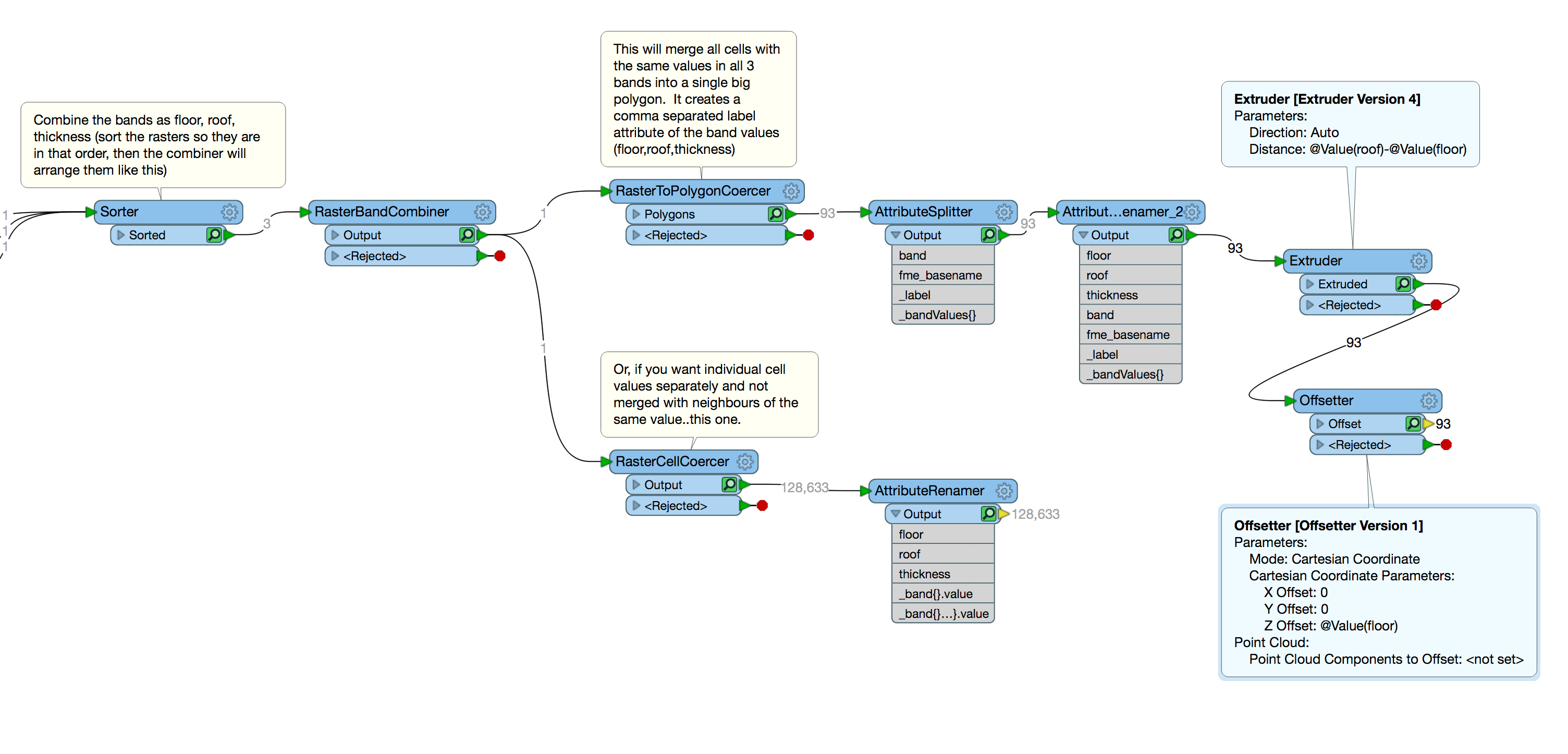Hi FMErs,
I have 3 rasters of equal extents and cell size (clipped to the same 2D polygon)
a) representing the floor elevation of a sub-surface strata
b) representing the thickness of the same sub-surface strata
c) representing the roof elevation of he same sub-surface strata
Looking for tips on the best / most efficient way to create a 3D polygon in FME similar to ESRI extrude between, and assuming other strata sections are available in the same raster form , iterate through each strata section to create a 3D subsurface model.
Thanks in advance
Best answer by fmelizard
View original




